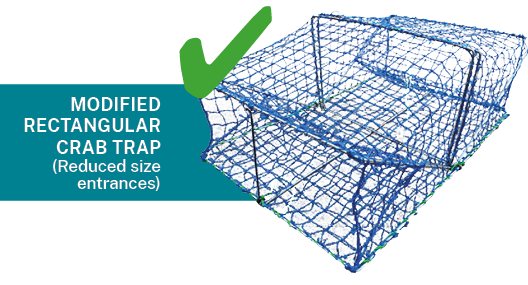Responsible crab fishing
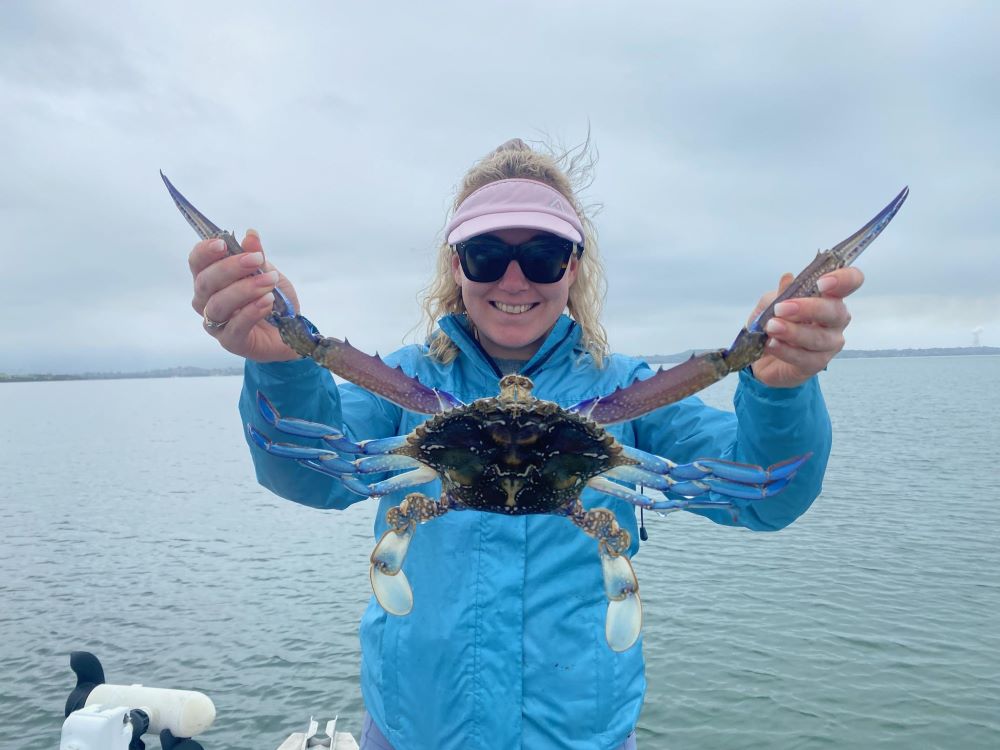
Crab fishing is a popular activity, particularly during the warmer months in NSW. Sought after crab species such as Mud Crab and Blue Swimmer Crab can be effectively targeted using traps and nets. This makes for a fun time on the water and provides exceptional eating when back on land.
Occasionally, set crab traps or nets can have negative impacts on non-target species, including turtles. Also, when they are set incorrectly, they can sometimes become lost and become marine debris, they may also continue to ‘ghost fish’ catching and killing animals unchecked.
Here are some useful tips to help ensure you fish for crabs in a responsible manner and reduce your environmental impact whilst enjoying our waterways and gathering some tasty seafood.
Choosing your gear to reduce bycatch
Lift nets and round crab traps with small entrances are considered to have a lower risk of wildlife bycatch. Due to their “open” design, and with the mesh laying on the seabed, lift nets are likely to have the lowest bycatch overall and have limited ghost fishing capacity.
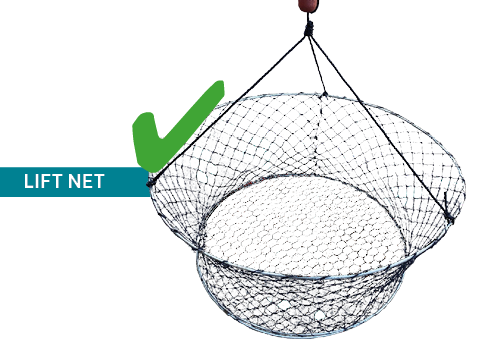
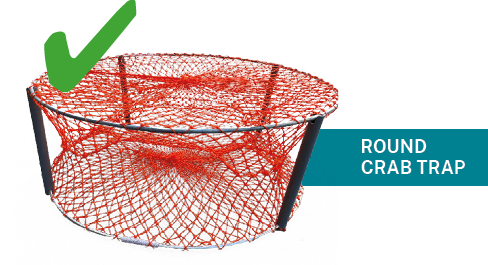
Modify your gear to improve its environmental performance
Crab traps that have large entrances, such as the large, rectangular, open-ended crab traps can potentially allow wildlife such as turtles to swim inside and become trapped. Modifying these traps by reducing the entrance size by simply adding some twine and a cable tie at the trap openings reduces the risk and still allows you to effectively catch crabs. Witches hat nets can catch non-target species and wildlife by the animals becoming stuck in the entanglement mesh of the gear. These can be modified to operate as a lift net by removing the float from the mesh. This reduces the risk produced by the suspended entanglement netting. Crabs feeding on the bait are caught when the net is lifted, significantly reducing the interaction potential with non-target species.
Reducing entrance size for traps:
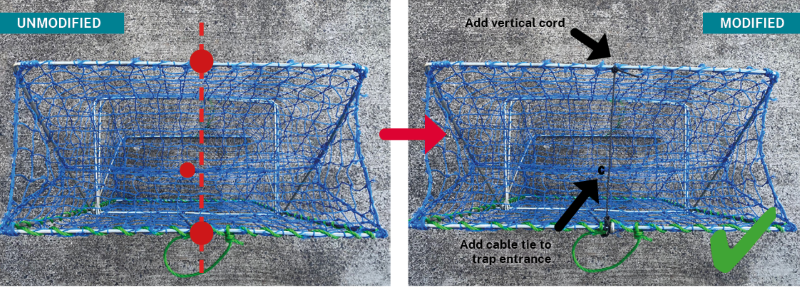
Modify each internal entrance by using a cable tie (or similar) to restrict the entrance to a maximum circumference of 60cm or smaller (this means limiting a typical flattened entrance to 30cm in length – approximately half-way across a typical rectangular crab trap). Similarly, install a length of vertical cord in front of each opening to deter turtles from trying to enter and steal baits.
Converting witches hats to lift nets:
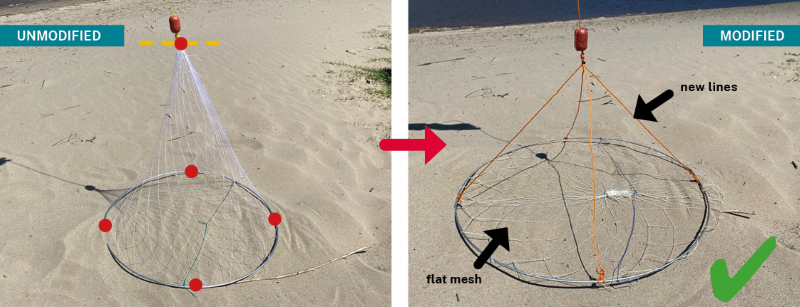
This gear type can be modified by removing the float from above the mesh and re-attaching the float line with several lengths of lines directly to the ring. This results in the mesh laying on the seabed rather than being suspended, decreasing the risk of wildlife entanglement.
Choosing your location
Avoid high current areas and locations with big tidal movement. Placing your crab trap in these areas may result in lightly weighted traps being moved and lost due the strength of the water movement - this means your gear becomes marine debris and will likely ghost fish for a period of time.
Try to avoid main boating channels wherever possible - think about navigation and boat traffic when setting your gear as this can impact other water users. Fishers should also make sure that their crab gear is set in a sufficient depth of water at all stages of the tide (so that any marine animals are not exposed to the sun etc. and any bycatch can be released alive).
Weight your trap
If you are fishing in areas with big tides, consider adding some additional weight to your traps to ensure they don’t move with the tidal flow. Crab trap weights can sometimes be purchased from good tackle stores, and it is easy to make your own by securing a heavy weight in excess of 800gms to the base of your crab trap using cable ties or twine, be sure to evenly weight the base of the trap.
Sinking your rope
Remember to use the shortest rope possible connecting from your trap to your float, whilst accounting for tide, to avoid entanglement with marine life and marine craft. It is good practice to use sinking rope or weighted rope to reduce entanglement risk. In NSW, you are required to have a 50-gram weight attached no less than one metre below the buoy so that no rope/line is floating on the surface of the water when crab fishing.
Check your traps regularly
Fishers should check their traps as regularly as possible, rather than leaving them unattended for extended periods of time. Reducing the soak time will reduce the probability of air breathing animals (such as turtles) drowning and reduces the chance of someone else (illegally) lifting your gear. Checking your gear more regularly can also lead to better catches – particularly when using gear such as lift nets.
Do not allow traps to sit unattended for long periods of time and never abandon them, fishing gear that has been lost or abandoned can continue to kill fish and wildlife through ghost fishing.
How to fish for crabs successfully
Our research has shown that not only are round traps safer for turtles, but they also catch more crabs than rectangular traps, likely due to the centrally located bait. It has also been shown that the most effective method to improve your catch of crabs when using lift nets is to fish them actively and regularly check them. Around every 30 minutes is a good starting point.
Legal requirements
Crab traps
No more than two traps to be used (or in possession) by a person at any time.
No more than four entrances (none of which are on the top of the trap).
Hoop nets and witches hats
No more than four nets to be used (or in possession) by a person at any time.
No more than two hoops per net (no rigid frame between them).
The same rules apply for witches hats as for hoop nets.
How to measure a crab
Blue Swimmer and Mud Crabs are measured along the body from the notch between the two most protruding frontal teeth to the centre of the posterior margin of the carapace or shell.
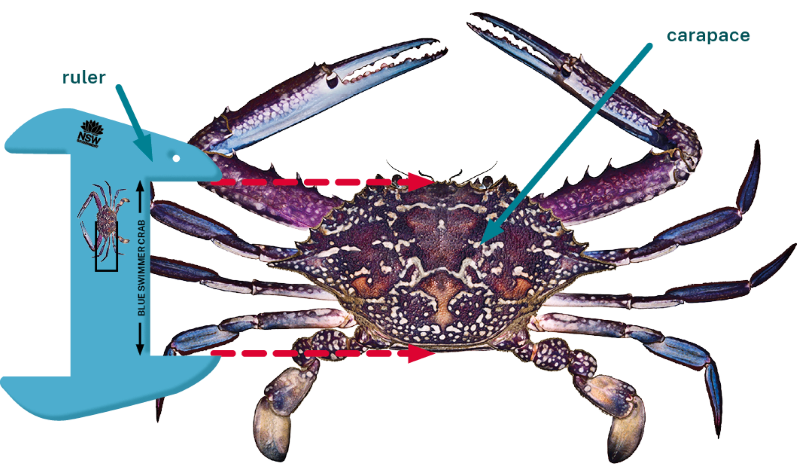
Floats
Floats are to be at least 100mm in size in all directions and labelled with the initials of the gear type (HN/CT), initial and surname, year of birth and postcode of the person fishing the gear. All letters to be at least 15 mm and in a colour contrasting to the float.
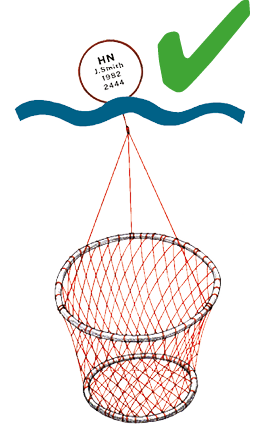
REMEMBER:
Peak crab catches in NSW occur typically during the summer so be sure to focus your crab fishing effort during the warmer months for the best results. If you catch any fish (other than crabs) they must be returned to the water.
There are other specific gear rules, bag, size and possession limits, and waters where crab traps and nets cannot be used – for more details download the free FishSmart app.
